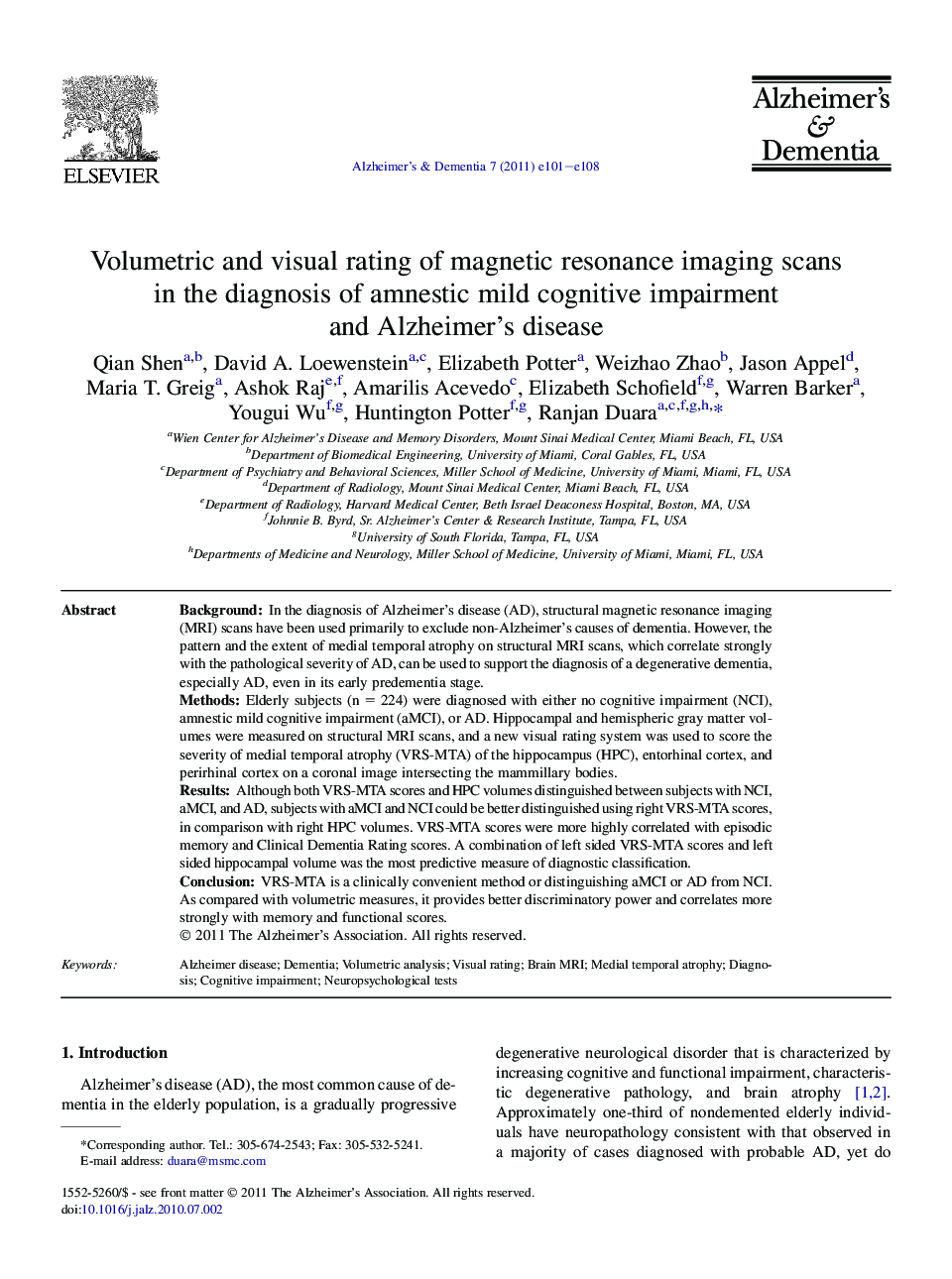| Article ID | Journal | Published Year | Pages | File Type |
|---|---|---|---|---|
| 5624748 | Alzheimer's & Dementia | 2011 | 8 Pages |
BackgroundIn the diagnosis of Alzheimer's disease (AD), structural magnetic resonance imaging (MRI) scans have been used primarily to exclude non-Alzheimer's causes of dementia. However, the pattern and the extent of medial temporal atrophy on structural MRI scans, which correlate strongly with the pathological severity of AD, can be used to support the diagnosis of a degenerative dementia, especially AD, even in its early predementia stage.MethodsElderly subjects (n = 224) were diagnosed with either no cognitive impairment (NCI), amnestic mild cognitive impairment (aMCI), or AD. Hippocampal and hemispheric gray matter volumes were measured on structural MRI scans, and a new visual rating system was used to score the severity of medial temporal atrophy (VRS-MTA) of the hippocampus (HPC), entorhinal cortex, and perirhinal cortex on a coronal image intersecting the mammillary bodies.ResultsAlthough both VRS-MTA scores and HPC volumes distinguished between subjects with NCI, aMCI, and AD, subjects with aMCI and NCI could be better distinguished using right VRS-MTA scores, in comparison with right HPC volumes. VRS-MTA scores were more highly correlated with episodic memory and Clinical Dementia Rating scores. A combination of left sided VRS-MTA scores and left sided hippocampal volume was the most predictive measure of diagnostic classification.ConclusionVRS-MTA is a clinically convenient method or distinguishing aMCI or AD from NCI. As compared with volumetric measures, it provides better discriminatory power and correlates more strongly with memory and functional scores.
